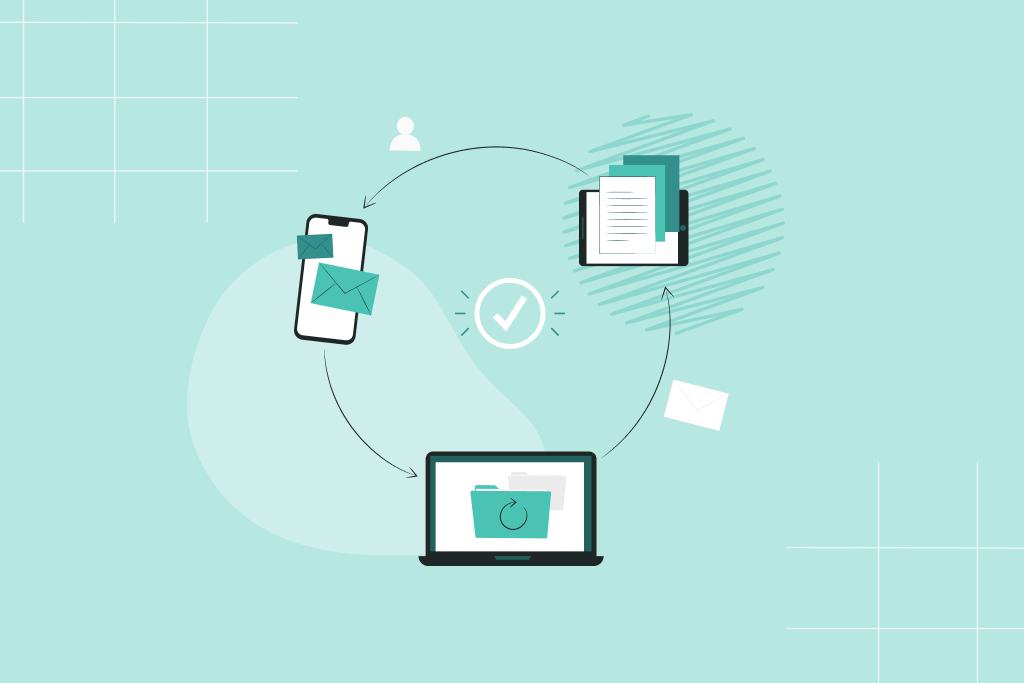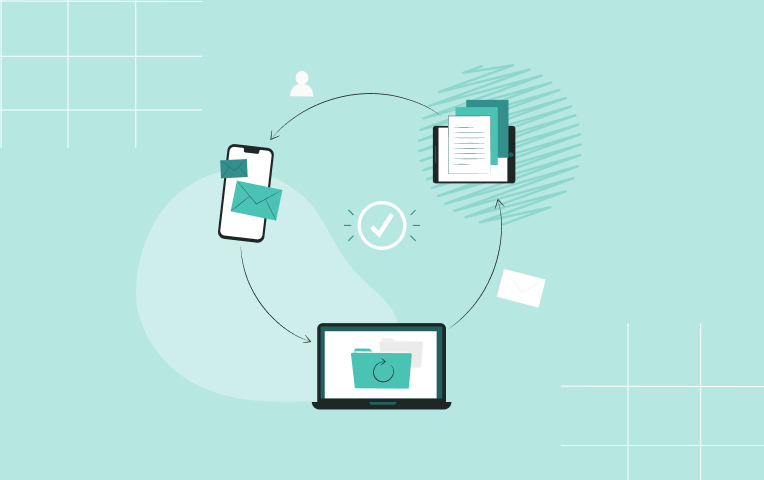If you’re reading this article, you may be contemplating a solution that simplifies complex HR and payroll processes and makes your organizational data more accessible, all while keeping your people at the forefront. That is essentially what HCM software does. Payroll and HR already work in tandem in your organization, so it only makes sense to integrate your processes in one powerful, easy-to-use solution. But before we dive into that, what exactly is HCM software?
What does HCM mean?
HCM stands for human capital management. It is software that manages an organization's workforce-related activities, providing everything you need to manage your employees from hire to retire. Think of it as a toolbox with the features and functionality you need to improve overall workforce productivity and ensure compliance with labour laws and regulations. It has everything you need to manage your people operations – payroll, time and attendance, onboarding and recruiting, performance management, reporting, and more.
What’s the difference between HCM and HRIS?
While HCM and HRIS are often used interchangeably, they are not synonymous. There are some differences in terms of how each contributes to managing human capital within an organization that you should be aware of. An HRIS, or human resources information system, is used for data entry, tracking, and managing all HR operations. HRIS systems are designed to automate day-to-day HR tasks and streamline employee data management, including payroll, benefits, performance reviews, and training records, making HRIS primarily a data-management-focused software.
On the other hand, HCM focuses on managing employees throughout their entire lifecycle. It's a complete suite, encompassing HRIS functionalities and beyond, offering additional tools and features that focus on macro-level processes and people strategies, such as scheduling, enhancing employee engagement, fostering career development, and boosting overall productivity. HCM is the most effective tool for managing your people-related processes and improving your operational efficiency.
What is an HCM software used for?
An HCM solution comprises many features configurable to meet your organization’s size and specific needs while streamlining your core payroll and HR processes. Here are a few essential features an HCM system provides:
- Recruitment & onboarding: Manage the recruitment process, from managing job descriptions to onboarding new hires
- Workflows: Build automated workflows to reduce manual tasks and heighten productivity
- Payroll & benefits administration: Process payroll and manage employee benefits
- Compensation management: Manage employee compensation, from salary to overtime pay
- Scheduling: Create schedules that account for availability, vacation days, sick days, shift eligibility, and more
- Absence and leave management: Effectively manage employee absences, whether planned or unplanned
- Self-service: Give employees the capacity to manage, edit, and update their own information
- Training: Provide continuous training to your employees and encourage the development of new skills
- Performance appraisals: Real-time employee performance assessment
The benefits of HCM software
The benefits of HCM software are experienced organizationally, from your payroll systems and HR departments to your singular employee. HCM systems help empower organizations to make the most out of their workforce. From streamlining operations to enhancing collaboration and ensuring compliance, HCM solutions offer multiple benefits. Here's a closer look at how leveraging an integrated HCM solution can simplify workforce management, maximize productivity, and drive organizational success.
Ensure compliance
Stay up-to-date with changing Canadian payroll regulations through automated processes. With all your information stored in one centralized database, documents are easily accessible and within reach, making submitting and remitting a breeze.
Save time and boost productivity
Payroll is time-consuming, but with HCM software, you can significantly reduce the time spent on payroll-related tasks. For instance, with employee data secured in one system, managing employee compensation becomes simple and efficient, eliminating the need to repeat the same task twice. By automating redundant processes, your HR department, like your payroll department, can also save time and focus on strategic HR initiatives instead.
Efficient reporting and insight
With an integrated HCM solution, you don’t need to spend hours transporting data from one system to another to build reports. Instead, you can pull valuable insights from your payroll and HR combined database and business intelligence tools simultaneously to create comprehensive reports, skipping the hassle of scouring data from separate systems. By collecting and analyzing organizational data, payroll and HR professionals can make data-driven and data-backed decisions to improve their workforce planning and HR strategy.
Data accuracy
Ensuring data accuracy and consistency is essential. One mistake and an employee on your payroll team could face the consequences. A synchronized system with seamless data flow is your best bet to maintain data integrity. After you enter key information, it’ll automatically upload and reflect in all locations, reducing errors significantly.
A single source of truth
In the same vein, a single source of truth for employee data not only improves data accuracy but security, too. With so many critical organization-wide decisions dependent on data, it’s essential to be stored safely and easily accessible. With HCM software, your data is securely stored in a single database to reduce the threat of security breaches and unauthorized access.
Easy onboarding
Employees settling into a new role can feel at ease with smooth, streamlined onboarding that reduces the time spent on manual processes. They can manage their own information, including self-serve paperwork for profiles, tax forms, and more, through a self-service portal. With automated recruiting tools and centralized applicant data, HCM software helps you roll out the red carpet for new hires.
Accessibility
From accessing training modules and compensation to personal data, the efficiency of self-service tools is a win for employees, payroll, and HR departments alike. These tools empower employees to access and manage their information independently as needed. Any changes made by employees are automatically updated throughout the HCM system, eliminating the need for back-and-forth emails about address changes, tax slip questions, or pay statement requests.
Conclusion
There you have it. Now you know what HCM software is, what it does, and how it can benefit your people and payroll. Effective HCM software helps improve your entire organization by saving time and money, boosting productivity, and making workdays easier. From streamlining redundant tasks and processes to creating an efficient flow of information, you gain control, and your employees reap the benefits of a well-oiled machine!
Additional Reading Links
Get ready to do things the easy way
From faster payroll processing to simplified scheduling, Avanti’s HCM software is designed to transform the way you work. Simplify your tasks and support your team with our full suite of powerful HCM tools and Canadian payroll expertise.







